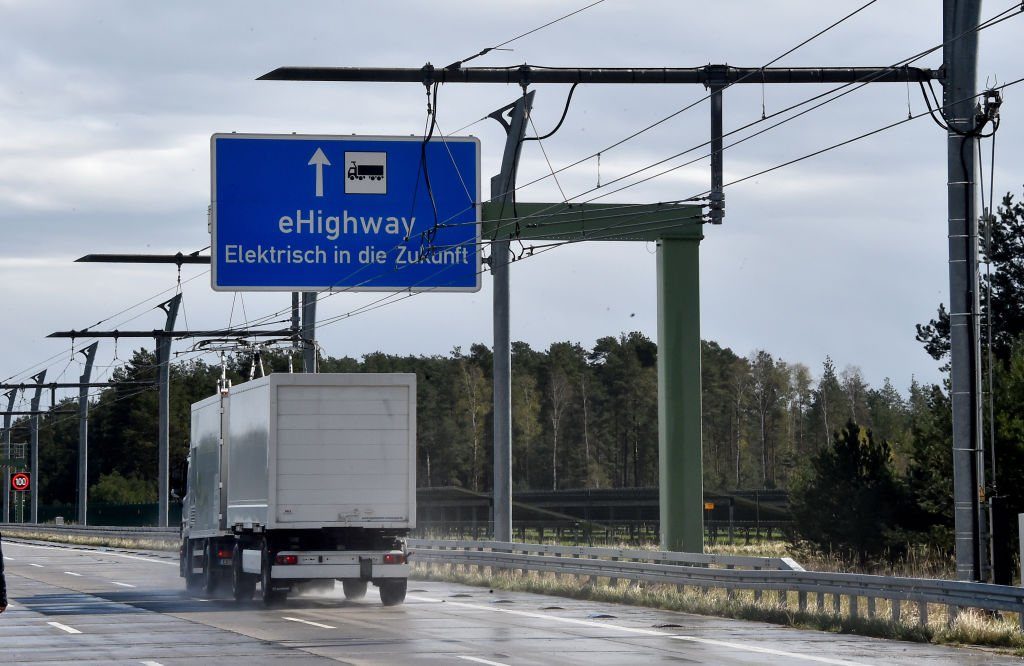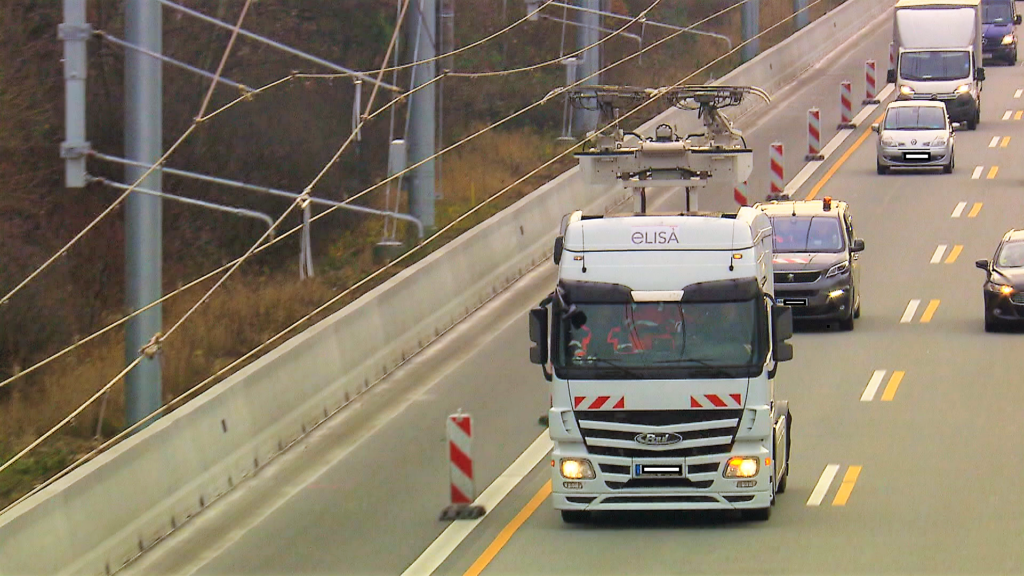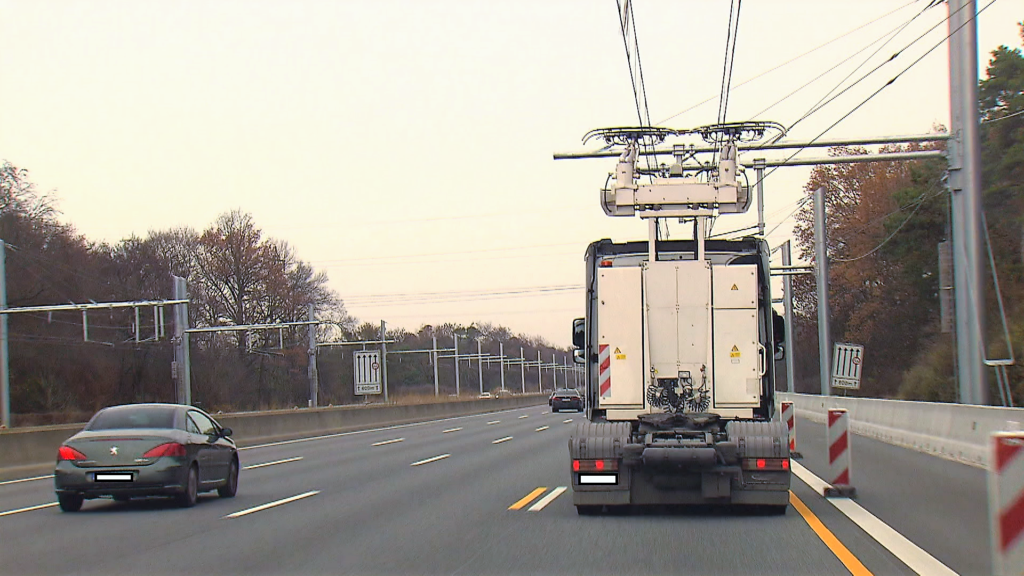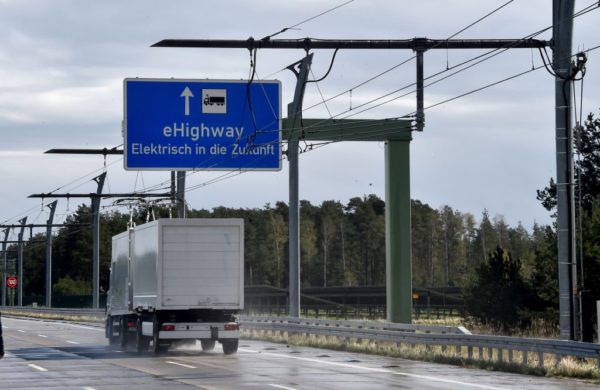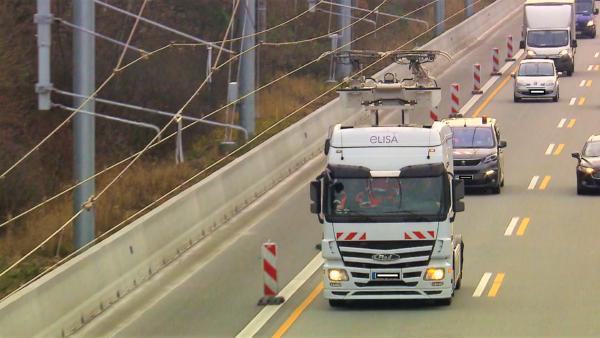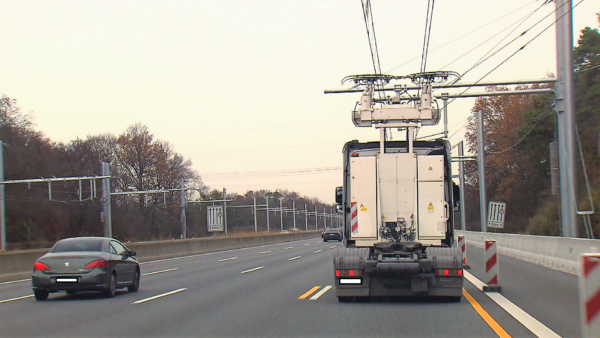ELISA
The project is called ELISA which stands for “elektrifizierter, innovativer Schwerverkehr auf Autobahnen” (electrified, innovative heavy traffic on motorways). Five haulage companies will regularly use the route between the junctions Langen/Mörfelden and Weiterstadt.
The trucks need a pantograph on the roof and a hybrid drive in order to be able to dock to the overhead line installed there. The technology should help to reduce the pollutant emissions of heavy goods vehicles. The purpose of refueling electricity while driving is to recharge the batteries. The truck can then continue driving in battery mode. If the batteries are empty, the hybrid engine takes over the drive. One hundred percent of the electricity for the prototype comes from renewable energy sources so that the trucks can drive climate-neutrally along the route.
The project will initially run until 2022.
229 masts over five kilometers
The aim of the experiment is not only to clarify the suitability of the e-highway for everyday use but also to find out how e-mobility is economically viable for freight forwarders, how traffic is influenced and how rescue services may be obstructed. The Technical University of Darmstadt evaluates the reduction of pollutants.
A total of 229 masts were installed for the test track, which is one of the busiest motorway sections in Germany. Here 135,000 vehicles drive daily, 14,000 of which are trucks.
Further routes
Two further test tracks are already being planned. Starting in September, tests will be carried out in Schleswig-Holstein on another five kilometers stretch between Reinfeld and Lübeck. A test track in Baden-Württemberg is also to follow.
In Sweden, the world’s first e-highway was opened in June 2016. With its two kilometers stretch on two hybrid tracks, it serves as preparation for a large-scale introduction into the Swedish road network. Another line has also been set up in California, USA.
Are e-highways competitive?
The costs for the test track in Hessen amounts to 14.6 million Euros, which will be borne by the Federal Environment Ministry. The Ministry estimates the cost of a large-scale expansion at around one million Euros per kilometer. In addition, haulage companies would have to convert their trucks to the new technology. Critics, therefore, consider the e-highways to be uneconomical. The system may be worthwhile for special repetitive transport routes, e.g. in factory traffic. Then, are hybrid trucks with drivers just an unnecessary intermediate step on the way to autonomous transporters?
But let’s wait and see what the test will bring before we are too critical…
